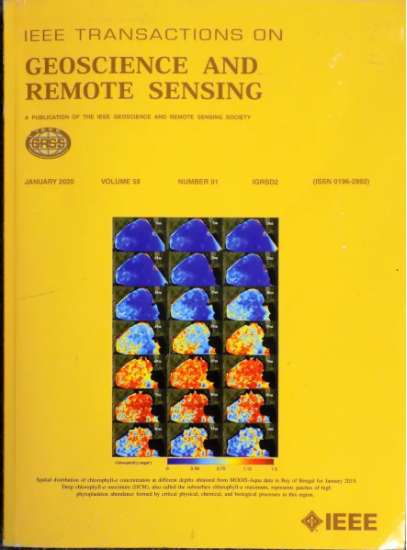An Intelligent First-Arrival Picking Method of Microseismic Signals Based on the Small Sample Expansion
IF 7.5
1区 地球科学
Q1 ENGINEERING, ELECTRICAL & ELECTRONIC
IEEE Transactions on Geoscience and Remote Sensing
Pub Date : 2025-04-21
DOI:10.1109/TGRS.2025.3562813
引用次数: 0
Abstract
An accurate and efficient first-arrival picking method of microseismic signals is essential for improving the microseismic recording processing performance. However, the weak seismic magnitude and low signal-to-noise ratio (SNR) of microseismic signals make highly accurate and efficient microseismic signal processing challenging when traditional signal picking methods are used. Therefore, to use microseismic signal features effectively and improve both the accuracy and the efficiency of the first-arrival picking of microseismic signals, this article proposes a first-arrival picking method of microseismic signals based on deep learning. In addition, a generative adversarial network with latent space and adaptive layer-instance normalization for microseismic signals generation (G-LA-MSG) is used to generate a large number of effective microseismic signals under unsupervised conditions to expand the microseismic data having a limited number of samples. On the basis of the sample expansion, an AND-OR grammar pyramid scene parsing network (AOG-PSPNet) is designed to select the first arrivals of microseismic signals. By adopting the AND-OR grammar block (AOGBlock) structure, the network can fully extract the sequence data features, achieve good SNR separation in a low-SNR environment, and improve the accuracy of first arrivals of low-SNR microseismic signals. The results of the arrival picking experiments conducted under the condition of a low SNR for synthetic microseismic records and real microseismic records show that the proposed method can achieve a superior performance compared with the commonly used deep learning-based methods for first-arrival picking of microseismic signals.基于小样本展开的微震信号智能初到拾取方法
一种准确、高效的微震信号初到拾取方法是提高微震记录处理性能的关键。然而,由于微震信号震级弱、信噪比低,使得传统的信号采集方法难以实现高精度、高效的微震信号处理。因此,为了有效利用微震信号特征,提高微震信号初到拾取的精度和效率,本文提出了一种基于深度学习的微震信号初到拾取方法。此外,利用潜在空间和自适应层实例归一化的微震信号生成生成对抗网络(G-LA-MSG),在无监督条件下生成大量有效的微震信号,以扩展样本数量有限的微震数据。在样本扩展的基础上,设计了一个与或语法金字塔场景解析网络(AOG-PSPNet)来选择微震信号的首到点。该网络采用与或语法块(AOGBlock)结构,可以充分提取序列数据特征,在低信噪比环境下实现较好的信噪比分离,提高低信噪比微震信号首到精度。在低信噪比条件下对合成微震记录和真实微震记录进行了到达拾取实验,实验结果表明,与常用的基于深度学习的微震信号首次到达拾取方法相比,本文方法具有更优的拾取性能。
本文章由计算机程序翻译,如有差异,请以英文原文为准。
求助全文
约1分钟内获得全文
求助全文
来源期刊

IEEE Transactions on Geoscience and Remote Sensing
工程技术-地球化学与地球物理
CiteScore
11.50
自引率
28.00%
发文量
1912
审稿时长
4.0 months
期刊介绍:
IEEE Transactions on Geoscience and Remote Sensing (TGRS) is a monthly publication that focuses on the theory, concepts, and techniques of science and engineering as applied to sensing the land, oceans, atmosphere, and space; and the processing, interpretation, and dissemination of this information.
 求助内容:
求助内容: 应助结果提醒方式:
应助结果提醒方式:


